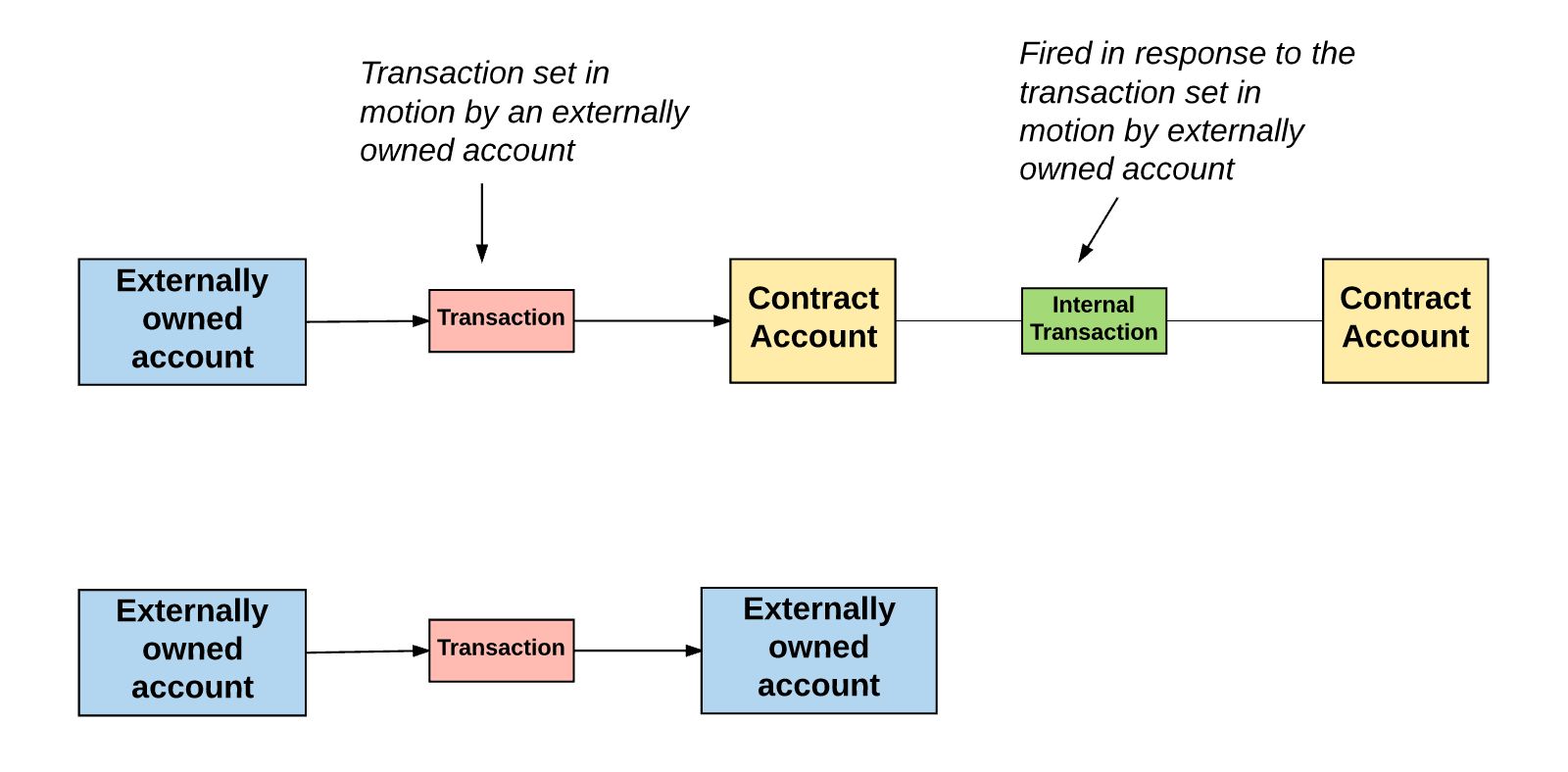Introduction
Ethereum, the second-largest cryptocurrency by market capitalization, has taken the financial world by storm. While most people are familiar with Ethereum as a digital currency, it is essential to understand the underlying infrastructure that powers this revolutionary blockchain platform.
At the core of Ethereum’s functioning are nodes, which play a vital role in maintaining the integrity of the network. In this article, we will delve into what Ethereum nodes are, why they are crucial, and the different types of nodes that exist.
Ethereum, created by Vitalik Buterin in 2013, introduced the concept of smart contracts. Unlike Bitcoin, Ethereum is a programmable blockchain that allows developers to build decentralized applications (dApps) on top of its platform. The Ethereum blockchain serves as a decentralized, immutable ledger where these smart contracts and dApps can operate.
Ethereum nodes can be thought of as individual computers or servers that participate in the Ethereum network. They maintain a copy of the entire blockchain and validate transactions to ensure that they comply with the network’s rules. Nodes communicate with each other to achieve consensus on the state of the Ethereum network.
Why are Ethereum nodes important? Without nodes, the Ethereum network would not function properly. They are responsible for verifying the validity of transactions, executing smart contracts, and ensuring the security and decentralization of the network. Transactions must be validated by multiple nodes before being added to the blockchain, ensuring that no single entity can control or manipulate the network.
Let’s explore the different types of Ethereum nodes that exist:
What is Ethereum?
Ethereum is a decentralized, open-source blockchain platform that enables the creation and execution of smart contracts and decentralized applications (dApps). It was conceptualized by Vitalik Buterin in 2013 and has since become one of the leading cryptocurrencies in the world.
While Bitcoin paved the way for digital currencies and peer-to-peer transactions, Ethereum took it a step further by introducing the concept of programmable contracts. Unlike traditional contracts, which are enforced by legal systems, smart contracts on the Ethereum platform are self-executing. They automatically enforce the terms and conditions of an agreement without the need for intermediaries.
Ethereum operates on a distributed network of computers, known as nodes, that work together to maintain the integrity of the blockchain. Nodes validate transactions, execute smart contracts, and store a copy of the entire blockchain. This decentralized approach ensures that no single entity has control over the network and protects it from censorship or manipulation.
One of the key features that sets Ethereum apart is its native cryptocurrency called Ether (ETH). Ether is used within the Ethereum network as a medium of exchange for services and transactions. It is also traded on various cryptocurrency exchanges and serves as a valuable investment asset.
Developers can leverage the Ethereum platform to build decentralized applications, or dApps, which can range from financial services to gaming and supply chain management. These dApps interact with the Ethereum blockchain to access and store data securely, ensuring transparency and trust among participants.
Ethereum’s strong developer community and its support for smart contracts have made it a powerful platform for innovation in the blockchain space. It has paved the way for the development of numerous decentralized applications and has driven enterprise adoption of blockchain technology.
Ethereum continues to evolve with ongoing upgrades and improvements to enhance scalability, security, and efficiency. The future of Ethereum holds the potential for further advancements, including the migration to Ethereum 2.0, which will introduce a new consensus mechanism called Proof of Stake and increase transaction processing speed.
In summary, Ethereum is a decentralized blockchain platform that allows developers to build and deploy smart contracts and decentralized applications. Its programmable nature and strong community support have positioned it as a leading player in the world of blockchain technology.
What are Ethereum Nodes?
Ethereum nodes are essential components of the Ethereum network. They are individual computers or servers that maintain a copy of the entire Ethereum blockchain and participate in the validation and execution of transactions and smart contracts.
Think of Ethereum nodes as the backbone of the network, working together to ensure the integrity and security of the Ethereum blockchain. Each node has its own copy of the blockchain and independently verifies the transactions that occur on the network.
When a transaction is initiated on the Ethereum network, it is broadcasted to all the nodes. The nodes then validate the transaction by checking if the sender has sufficient funds and if the transaction follows the network’s rules. Once a consensus is reached among the nodes that the transaction is valid, it is added to the blockchain.
Not only do Ethereum nodes validate transactions, but they also execute smart contracts. Smart contracts are self-executing agreements with the terms of the contract written directly into the code. When a smart contract is triggered, Ethereum nodes execute the necessary code and update the state of the blockchain accordingly.
Another important role of Ethereum nodes is maintaining the decentralization and security of the network. Unlike traditional centralized systems, where a single entity is responsible for managing and securing the network, Ethereum relies on the collective power of its nodes. By distributing the blockchain among multiple nodes, Ethereum ensures that no single party can control or manipulate the network.
Furthermore, nodes communicate with each other to achieve consensus. This means that if a node receives a transaction or a block that is not valid, it will be rejected by the other nodes. Consensus mechanisms, such as Proof of Work or Proof of Stake, determine how nodes agree on the state of the blockchain and prevent fraudulent activities.
In summary, Ethereum nodes play a crucial role in maintaining the integrity, security, and decentralization of the Ethereum network. They validate transactions, execute smart contracts, and ensure that the network operates in a trustworthy and transparent manner. Without nodes, the Ethereum blockchain would be unable to function effectively as a decentralized platform for dApps and smart contracts.
Why are Ethereum Nodes Important?
Ethereum nodes are of paramount importance to the functioning and success of the Ethereum network. They serve several vital purposes that ensure the integrity, security, and decentralization of the ecosystem.
One of the primary reasons why Ethereum nodes are crucial is their role in validating transactions. When a transaction is initiated on the Ethereum network, nodes verify its authenticity and ensure that the sender has sufficient funds to complete the transaction. This validation process prevents the network from being flooded with fraudulent or malicious transactions and maintains the integrity of the blockchain.
Ethereum nodes also play a vital role in executing smart contracts. Smart contracts are self-executing programs that automatically execute the terms of an agreement when predefined conditions are met. Nodes execute the code within these contracts and update the state of the blockchain accordingly, ensuring that the contracts operate as intended without any human intervention.
Another significant reason for the importance of Ethereum nodes is their contribution to the decentralization of the network. With a decentralized network, no single entity or group can control or manipulate the blockchain. Instead, the power is distributed among the nodes. This ensures that every participant in the network has an equal say in the decision-making process, making Ethereum more resilient against censorship and fraud.
Furthermore, Ethereum nodes provide a crucial layer of security to the network. As each node maintains a copy of the entire blockchain, it becomes more challenging for attackers to manipulate the data. In order for an attack to succeed, a majority of the nodes would have to collude, making Ethereum highly secure and resistant to hacking attempts.
Additionally, nodes contribute to the overall stability and uptime of the Ethereum network. With a distributed network of nodes across the globe, the network remains operational even if some nodes go offline. This redundancy ensures that the network remains accessible and reliable, even in the face of technical issues or individual node failures.
Moreover, Ethereum nodes are crucial for enabling participation in the network. Anyone can set up an Ethereum node and join the network, becoming a part of the decentralized ecosystem. This accessibility fosters inclusivity and empowers individuals to contribute to the network’s security and consensus process.
In summary, Ethereum nodes are vital to the Ethereum network. They validate transactions, execute smart contracts, contribute to network decentralization, enhance security, ensure network stability, and enable broad participation. Without nodes, the Ethereum network would lack the integrity, security, and decentralization that make it a revolutionary platform for decentralized applications and smart contracts.
Types of Ethereum Nodes
In the Ethereum network, there are different types of nodes, each serving a specific purpose and playing a unique role in the functioning of the blockchain ecosystem. Let’s explore the various types of Ethereum nodes:
1. Full Nodes: Full nodes are the backbone of the Ethereum network. They store a complete copy of the entire Ethereum blockchain and participate in transaction validation, block creation, and consensus. Full nodes are responsible for verifying the integrity of the network and ensuring that all transactions and smart contracts adhere to the network’s rules. These nodes require substantial storage space and computational power due to the nature of storing the entire blockchain.
2. Light Nodes: Light nodes, also known as thin clients, are designed to operate with limited resources. They do not store the entire blockchain but instead rely on full nodes to validate transactions and retrieve blockchain data when needed. Light nodes are more lightweight and consume less bandwidth and storage space, making them suitable for devices with limited resources, such as smartphones and tablets.
3. Archival Nodes: Archival nodes are a type of full node that stores historical data, including past states of the blockchain. These nodes provide access to detailed information about the entire history of the blockchain. Archival nodes are particularly useful for researchers, analysts, and developers who require access to detailed historical data for analysis or auditing purposes.
4. Pruning Nodes: Pruning nodes are another type of full node that optimizes storage requirements by discarding older data from the blockchain. While full nodes store the entire blockchain history, pruning nodes retain only the most recent state along with a limited amount of historical data. Pruning nodes still participate in transaction validation and consensus, but they offer reduced storage requirements compared to full nodes.
These different types of nodes cater to various use cases and user requirements within the Ethereum network. Full nodes provide the highest level of security, decentralization, and data availability but come with higher resource requirements. Light nodes offer a more lightweight option for devices with limited resources. Archival nodes and pruning nodes provide specialized functionality for historical data access or optimized storage requirements.
It’s worth noting that anyone can run an Ethereum node, regardless of the type. Node operators contribute to the network’s security and decentralized nature, ensuring the integrity and resilience of the Ethereum blockchain.
In summary, the Ethereum network consists of different types of nodes that serve distinct purposes. Full nodes fulfill the crucial role of storing and validating the entire blockchain. Light nodes provide a lightweight alternative for devices with limited resources. Archival nodes store historical data for analysis and auditing purposes. Pruning nodes optimize storage requirements by discarding older data. Together, these nodes contribute to the robustness, accessibility, and functionality of the Ethereum network.
Full Nodes
Full nodes are fundamental components of the Ethereum network. They are responsible for storing and maintaining a complete copy of the entire Ethereum blockchain. Full nodes participate in the validation and execution of transactions, execution of smart contracts, and contribute to achieving consensus within the network.
One of the primary advantages of running a full node is having access to a comprehensive and up-to-date copy of the blockchain. This allows node operators to independently verify and validate transactions and smart contracts, ensuring the integrity of the network. By storing the complete blockchain, full nodes contribute to the decentralization and transparency of the Ethereum ecosystem.
Full nodes play a crucial role in validating transactions on the Ethereum network. When a transaction is initiated, it is broadcasted to all the nodes within the network. Full nodes verify the transaction by checking the sender’s balance and verifying that the transaction adheres to the network’s rules. This validation process ensures that only valid transactions are added to the blockchain, maintaining the trustworthiness of the network.
In addition to transaction validation, full nodes execute smart contracts. Smart contracts are self-executing agreements written as code on the Ethereum blockchain. Full nodes execute the code within these contracts, updating the state of the blockchain accordingly. This decentralized execution of smart contracts ensures that the terms and conditions of agreements are automatically enforced without the need for intermediaries.
Full nodes also contribute to achieving consensus within the Ethereum network. Consensus mechanisms such as Proof of Work (PoW) or Proof of Stake (PoS) ensure that all full nodes agree on the state of the blockchain. Through continuous communication and verification, full nodes work together to validate blocks, prevent double-spending, and maintain the integrity of the network.
Running a full node comes with certain resource requirements. The Ethereum blockchain requires significant storage space to accommodate the entire blockchain data. Moreover, full nodes consume computational power to validate transactions, execute smart contracts, and participate in consensus. Given the resource-intensive nature of full nodes, they are often run by dedicated individuals, research organizations, or businesses that have the necessary infrastructure and technical expertise.
Full nodes are crucial for maintaining the security, decentralization, and trustworthiness of the Ethereum network. By storing a complete copy of the blockchain and participating in transaction validation, smart contract execution, and achieving consensus, full nodes contribute to the overall resilience and stability of the Ethereum ecosystem.
In summary, full nodes are integral components of the Ethereum network. They store the complete blockchain, validate transactions, execute smart contracts, and participate in achieving consensus. Running a full node requires dedicated resources but contributes to the security, decentralization, and trustworthiness of the Ethereum network.
Light Nodes
Light nodes, also known as thin clients, are a lightweight alternative to full nodes in the Ethereum network. Unlike full nodes that store the entire blockchain, light nodes do not maintain a complete copy of the blockchain. Instead, they rely on full nodes to provide them with necessary data when required.
One of the primary advantages of light nodes is their reduced resource requirements. Since they do not store the entire blockchain, light nodes consume less storage space and computational power compared to full nodes. This makes them suitable for devices with limited resources, such as smartphones, tablets, or low-powered computers.
Light nodes rely on full nodes to validate transactions and provide blockchain data. When a transaction is initiated, light nodes broadcast the transaction to full nodes for validation. The full nodes verify the transaction, ensuring its authenticity and adherence to network rules. Once validated, the full nodes provide the necessary information about the transaction to the light nodes.
By relying on full nodes, light nodes can access the blockchain data they need on-demand. When a light node wants to verify the balance of an address or retrieve transaction history, it sends a request to a full node. The full node responds with the relevant data, allowing the light node to interact with the Ethereum network without storing the entire blockchain locally.
While light nodes offer a lightweight and resource-efficient option, they come with certain trade-offs. Light nodes heavily rely on full nodes for transaction validation and blockchain data. This means that their functionality and responsiveness are dependent on the availability and reliability of the full nodes they connect to. If a reliable connection to a full node is not maintained, light nodes may experience delays or limited functionality.
Despite these trade-offs, light nodes provide a viable option for users who want to interact with the Ethereum network on devices with limited resources or intermittent connectivity. They enable access to the Ethereum ecosystem without fully participating in the validation and maintenance of the blockchain.
It’s important to note that light nodes still contribute to the decentralization of the Ethereum network. Even though they rely on full nodes for certain tasks, they provide an additional layer of accessibility and inclusivity. Users with light nodes can verify transactions and interact with decentralized applications, allowing them to be a part of the Ethereum ecosystem.
In summary, light nodes are lightweight alternatives to full nodes in the Ethereum network. They rely on full nodes for transaction validation and blockchain data, making them resource-efficient and suitable for devices with limited resources. Light nodes contribute to the decentralization of the network and enable users to access and interact with the Ethereum ecosystem without fully storing the blockchain.
Archival Nodes
Archival nodes are a type of Ethereum node that plays a crucial role in providing access to historical data on the Ethereum blockchain. Unlike full nodes that store only the most recent states of the blockchain, archival nodes store a complete record of the entire blockchain history, including past states and transactions.
One of the primary purposes of archival nodes is to provide researchers, auditors, and developers with access to detailed historical data for analysis and auditing purposes. These nodes store every transaction and state change that has ever occurred on the Ethereum network, making them ideal for retrieving specific data points for research or verification.
Archival nodes are particularly valuable because they allow for in-depth analysis of the Ethereum network over time. Researchers can trace the flow of funds, study patterns, and analyze the behavior of smart contracts throughout the history of the blockchain. This historical data can provide insights into the evolution of the network and assist in detecting anomalies or understanding long-term trends.
Furthermore, archival nodes support increased transparency and accountability within the Ethereum ecosystem. By maintaining a comprehensive record of all historical data, these nodes enable the auditing and verification of transactions, smart contracts, and other activities that have occurred on the Ethereum blockchain. This level of transparency helps build trust among participants and enhances the credibility of the Ethereum network.
However, it’s essential to note that running an archival node requires significant storage capacity. As the Ethereum blockchain continues to grow, the storage requirements for archival nodes increase over time. Storing the entire blockchain history can require several terabytes of storage space, making it a resource-intensive operation.
Archival nodes are often operated by research institutions, blockchain analysis firms, or organizations that require detailed historical data access. These nodes provide valuable services to professionals who need to delve into the historical intricacies of the Ethereum blockchain. By offering comprehensive and granular data, archival nodes contribute to the overall understanding and advancement of the Ethereum ecosystem.
In summary, archival nodes in the Ethereum network specialize in storing the complete history of the blockchain, including historic states and transactions. They are essential for researchers, auditors, and developers who require access to detailed historical data for analysis, verification, and auditing purposes. Archival nodes enhance transparency, accountability, and provide valuable insights into the long-term evolution of the Ethereum network.
Pruning Nodes
Pruning nodes are a type of Ethereum node that optimizes storage requirements by discarding older data from the blockchain. While full nodes store the entire blockchain history, pruning nodes only retain the most recent state along with a limited amount of historical data.
The primary purpose of pruning nodes is to reduce the storage space required to run a node while still being able to participate in transaction validation and blockchain consensus. By discarding older data, pruning nodes are able to significantly reduce their storage requirements, making them more accessible for users with limited storage capacity or resources.
With pruning nodes, the emphasis is placed on maintaining the most recent state of the blockchain. This allows for efficient verification of transactions and participation in consensus mechanisms. By retaining this recent state along with a small subset of historical data, pruning nodes strike a balance between resource efficiency and network participation.
It’s important to note that while pruning nodes discard older data, they still need to rely on other full nodes or archival nodes to access the complete transaction history in case historical data is required. Pruning nodes are optimized for regular network operations, but they may require additional external sources to retrieve older transaction details or states if necessary.
Pruning nodes can be particularly useful in scenarios where both storage limitations and network participation are important considerations. For example, running a pruning node may be more practical for individual users or smaller organizations who want to participate in the Ethereum network while keeping storage costs and resource demands in check.
However, there are some trade-offs when using pruning nodes. Since they discard older data, pruning nodes may not be suitable for applications that require access to extensive historical data, such as in-depth research or auditing purposes. Pruning nodes prioritize recent data and overall network efficiency, making them more focused on real-time operations.
In summary, pruning nodes provide a storage-efficient option for participating in the Ethereum network. They prioritize the most recent state of the blockchain and discard older data, reducing storage requirements while still enabling transaction validation and consensus participation. Pruning nodes strike a balance between resource efficiency and network participation, making them suitable for users with limited storage capacity or resources.
Running an Ethereum Node
Running an Ethereum node is a way for individuals or organizations to actively participate in the Ethereum network and contribute to its decentralization, security, and availability. By running a node, you become an integral part of the blockchain ecosystem and help validate transactions, execute smart contracts, and maintain the integrity of the network.
To run an Ethereum node, you need to follow these steps:
1. Choose the type of node: Determine whether you want to run a full node, light node, archival node, or pruning node, based on your requirements and available resources. Consider factors such as storage capacity, computational power, and network connectivity.
2. Install the Ethereum client: Select a suitable Ethereum client software such as Geth or Parity for your operating system. These clients provide the necessary software infrastructure to run an Ethereum node. You can download the client from the official Ethereum website or the respective client’s GitHub repository.
3. Sync the blockchain: After installing the Ethereum client, you need to synchronize your node with the Ethereum network. This process involves downloading and verifying the entire blockchain history, which can take some time depending on the type of node and network speed. It’s crucial to ensure that your system meets the hardware requirements to support the synchronization process.
4. Set up and configure the node: Once the synchronization is complete, you can configure your node based on your preferences and requirements. This includes setting up network connectivity, defining mining settings (if applicable), adjusting security parameters, and configuring any additional functionalities or plugins supported by the chosen client.
5. Maintain and update the node: Regularly update your Ethereum client to stay up to date with the latest developments and security patches. It’s important to keep your node running smoothly and ensure its compatibility with the evolving Ethereum network.
6. Monitor your node: Monitor the performance and health of your node to ensure it is functioning properly. Keep an eye on resource usage, disk space, network connectivity, and any error messages or warnings. Regularly check for updates from the Ethereum community or official sources to stay informed about any changes or improvements that could enhance your node’s performance.
Running an Ethereum node is a commitment that requires continuous attention, resources, and technical knowledge. However, by running a node, you actively contribute to the Ethereum network’s robustness, security, and decentralization, supporting the vision of a thriving and trustworthy blockchain ecosystem.
In summary, running an Ethereum node involves choosing the type of node, installing the Ethereum client, synchronizing the blockchain, configuring the node, maintaining and updating it, and monitoring its performance. By running a node, you actively participate in the Ethereum network and contribute to its security, decentralization, and availability.
Setting Up an Ethereum Node
To set up an Ethereum node, you need to follow a series of steps to ensure a successful and functional deployment. Here is a guide to help you navigate through the process:
1. Choose the Type of Ethereum Node: Determine the type of Ethereum node you want to set up based on your requirements and available resources. Consider factors such as storage capacity, computational power, and network connectivity. Common types include full nodes, light nodes, archival nodes, and pruning nodes.
2. Select an Ethereum Client: Choose an Ethereum client software that aligns with the type of node you want to set up. Popular options include Geth (Go Ethereum) and Parity. These clients provide the infrastructure to interact with the Ethereum network and run the node.
3. Install the Ethereum Client: Download and install the selected Ethereum client onto your computer or server. Ensure that your system meets the hardware and software requirements for the chosen client. You can find installation instructions and resources on the official Ethereum client website or the client’s GitHub repository.
4. Configure the Ethereum Client: Once the client is installed, you need to configure it to align with your requirements. This includes setting up network connectivity, specifying the type of node you want to run (e.g., full node or light node), defining mining parameters (if applicable), and adjusting any other settings based on your preferences and needs.
5. Synchronize the Blockchain: Depending on the type of node you are setting up, you may need to synchronize your node with the Ethereum blockchain. This process involves downloading and verifying the entire blockchain or specific subsets of it. It may take some time, as the Ethereum blockchain is continuously growing. Ensure your system has enough storage space and a stable internet connection for the synchronization process.
6. Configure Security: Take security precautions to protect your Ethereum node and the funds associated with it. Implement strong passwords, use firewalls, keep your Ethereum client up to date with the latest security patches, and follow best practices for securing your server or computer environment.
7. Test and Monitor: Once your Ethereum node is set up, it’s important to test its functionality and monitor its performance. Test transactions, interactions with smart contracts, and synchronization to ensure that everything is working as expected. Keep an eye on resource usage, disk space, and any error messages or warnings that may indicate issues with your node.
Setting up an Ethereum node requires technical expertise and the diligence to keep your node up to date and properly configured. It’s crucial to continuously monitor your node’s performance and security to ensure its smooth operation within the Ethereum network.
In summary, setting up an Ethereum node involves choosing the type of node, selecting and installing an Ethereum client, configuring the client, synchronizing the blockchain, securing the node, and testing its functionality. By following these steps, you can successfully deploy an Ethereum node and actively participate in the Ethereum network.
Maintaining an Ethereum Node
Maintaining an Ethereum node is crucial to ensuring its optimal performance, security, and stability within the network. Proper maintenance involves regular monitoring, updates, and security measures to keep your node running smoothly and efficiently. Here are some important aspects to consider when maintaining an Ethereum node:
1. Regular Updates: Stay up to date with the latest releases and updates from the Ethereum client software you are using. Regularly check for new versions, bug fixes, and security patches. Updating your node promptly helps to maintain compatibility with the evolving Ethereum network and protects against potential vulnerabilities.
2. Monitoring and Performance Optimization: Monitor the performance of your node regularly to ensure it is functioning optimally. Keep an eye on resource usage, disk space, network connectivity, and any error messages or warnings. Additionally, consider optimizing the performance of your node by adjusting settings, such as block synchronization intervals or connection configurations, to ensure efficient operation.
3. Security Measures: Implement security measures to protect your Ethereum node and the associated data. Use strong, unique passwords, enable firewalls, regularly update your system, and follow best practices for securing your server or computer environment. Additionally, consider using additional security measures, such as two-factor authentication or encryption, to enhance the security of your node.
4. Backup and Recovery: Regularly back up your Ethereum node data to protect it from accidental loss or corruption. Backing up ensures you can recover your node’s data and configuration in case of any hardware or software failures. Store backups in secure locations and test the restoration process periodically to ensure its reliability.
5. Network Connectivity: Maintain a stable and reliable internet connection for your Ethereum node. Network interruptions can impact the synchronization process and your node’s ability to communicate with other nodes. Consider using a reliable, high-speed internet connection and ensure proper network configurations to minimize service disruptions.
6. Stay Informed: Keep yourself updated with the latest news and developments in the Ethereum community. Stay informed about the Ethereum protocol upgrades, changes in consensus mechanisms, or any other relevant updates that may impact your node’s operation. Engage with the Ethereum community through forums, social media, and official channels to stay up to date and contribute to discussions.
7. Continuous Monitoring: Continuously monitor your node’s performance, health, and functionality. Set up monitoring tools or use built-in features provided by the Ethereum client software to track resource usage, block synchronization, and network connectivity. Regular monitoring allows you to detect and address issues proactively, ensuring the smooth operation of your Ethereum node.
By maintaining regular upkeep of your Ethereum node, you contribute to the overall health and stability of the Ethereum network. It ensures that your node operates efficiently, participates effectively in the network, and supports the decentralized nature and functionality of the Ethereum blockchain.
In summary, maintaining an Ethereum node involves regular updates, monitoring performance, implementing security measures, backing up data, ensuring network connectivity, staying informed about Ethereum developments, and continuously monitoring the node’s operation. Proper maintenance contributes to the stability, security, and reliability of your Ethereum node within the Ethereum network.
Conclusion
Ethereum nodes play a vital role in the functioning and success of the Ethereum network. These nodes, such as full nodes, light nodes, archival nodes, and pruning nodes, contribute to the validation of transactions, execution of smart contracts, and maintenance of the blockchain’s integrity. Each type of node serves specific purposes and accommodates different requirements and resource limitations.
Running an Ethereum node allows individuals and organizations to actively participate in the Ethereum ecosystem. By setting up and maintaining a node, users contribute to the network’s decentralization, security, and accessibility. Ethereum nodes ensure that transactions are valid, smart contracts operate as intended, and the entire network remains secure and transparent.
Setting up an Ethereum node involves choosing the type of node, selecting an Ethereum client, synchronizing the blockchain, configuring the node, and ensuring its security. Regular maintenance includes updating the Ethereum client, monitoring performance, implementing security measures, and staying informed about Ethereum developments.
Whether you choose to run a full node to actively participate in the validation and consensus process or opt for a light node to interact with decentralized applications on a resource-constrained device, your contribution helps maintain the integrity and decentralization of the Ethereum network.
Maintaining an Ethereum node is an ongoing commitment that requires technical expertise, resources, and dedication. However, the benefits of actively participating in the Ethereum network, such as supporting the vision of a decentralized and secure blockchain platform, make it a worthwhile endeavor.
With the continuous evolution and advancement of Ethereum, running and maintaining an Ethereum node remains an essential aspect for individuals and organizations involved in decentralized finance, decentralized applications, and blockchain research. By actively participating and contributing to the Ethereum network, users become integral contributors to the future growth and success of this revolutionary platform.

























